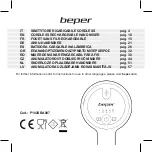
patched to a far outside input the signal will appear panned slightly
between the speakers to create a more natural soundscape.
The only inputs which are panned on top of one another are the centre
inputs of each row, the other inputs are arranged so that the upper
row has the widest panning, with panning becoming more narrow as
you go down rows. This is so that each non-central input has its own
unique space in the stereo field, which helps bring separation between
voices while still gluing them together nicely. The circuit uses equal
power panning to ensure the apparent level doesn’t change depending
on where the voice is positioned.
The human ear is more able to pinpoint the direction of a high
frequency sound than a low frequency one, so the high frequency row
has wider panning. Conversely, low frequency signals are perceived as
less directional and also require more energy to reproduce from your
speakers, so are panned more centrally. Also for people putting their
material out on vinyl it helps to have low frequency elements panned
centrally, to stop the needle being thrown out of the groove.
It’s worth noting that although SoundStage has 21 inputs it wasn’t
envisioned that they would all be used at once, which is why they’re so
densely packed together. The circuitry has been designed so that you
can use a lot of inputs at once (the actual number will vary depending
on the signals themselves) but you may find that you’re able to clip the
circuit. If this occurs and you don’t like the colour which the clipping
introduces it’s recommended that you decrease the levels of the voices
you’re inputting.
While the vast majority of recorded (and live) music has fixed pan
positions for the individual voices, some people may find the fixed
panning of the SoundStage to be a limitation. To patch voltage
controlled panning while also using the filtering of SoundStage simply
use a stereo panning VCA and patch the two outputs to the far left and

























